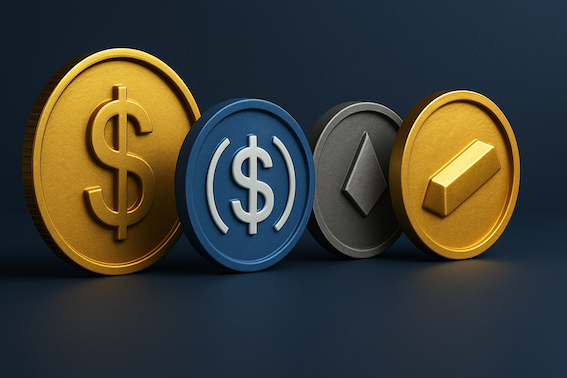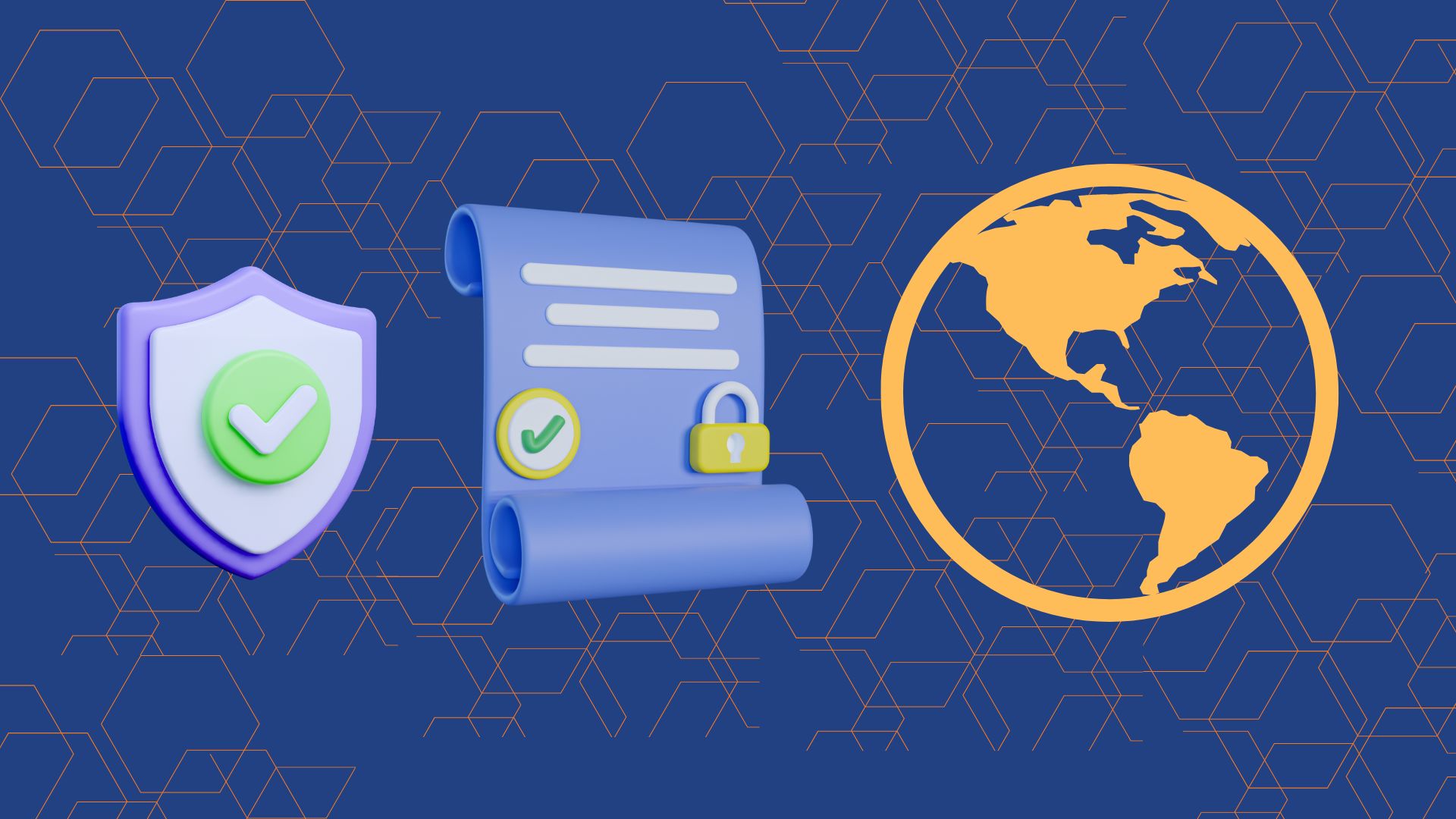Top 10 Real-World Asset (RWA) Tokenization Keywords You Must Know in 2025
Understand the vocabulary driving the next trillion-dollar opportunity.
Real-World Asset (RWA) tokenization is transforming the manner in which we think about ownership, liquidity, and access to finance worldwide. From real estate and shares to carbon credits and private debt, tokenization turns traditionally illiquid assets into digital, fractionalized, and tradable entities in ways never previously imagined.
But to truly understand this revolution, you must speak its language.
In this article, we're breaking down real-world asset tokenization's 10 most important keywords — the main ingredients for this rapidly growing sector.
1. Token Standards
What it means:
Token standard defines a digital asset's behavior on a blockchain. It can be thought of as the tech blueprint.
Why it matters in RWA:
Without well-defined, compliant token standards, interoperability or investor protection cannot be ensured across borders. Token standards like Zoniqx’s proprietary ERC-7518 enable regulatory-first tokenization of RWAs for institutional adoption.
Example:
ERC-7518 supports modular compliance layers, transfer limits, and identity regulations — the solution to tokenized securities.
2. Fractionalization
What it means:
Breaking an individual real-world asset's ownership into smaller fractionated digital chunks.
Why it matters in RWA:
Fractionalization makes it easier for more individuals to obtain an interest in and access to high-barrier sectors like commercial property, art, or infrastructure.
Example:
A data center deal of INR 12 crore can be segmented into 1,200 token units of INR 1 lakh each in order to be offered up for investment without undermining the asset’s integrity.
3. Compliance Layer
What it means:
The rules and mechanisms baked into the token and platform to ensure regulatory compliance (e.g., KYC, AML, transfer restrictions).
Why it matters in RWA:
Security tokens are legally regulated assets. Without dynamic compliance baked in, tokenization can’t go mainstream.
Example:
Zoniqx’s DyCIST protocol automates issuer and investor compliance across multiple jurisdictions using smart contract logic.
4. Smart Contracts
What it means:
Self-executing code on a blockchain that performs actions once predefined conditions are met.
Why it matters in RWA:
Smart contracts enable trustless settlement, automated interest payments, and rule-based asset transfers without intermediaries.
Example:
In tokenized debt, smart contracts can automatically distribute interest to token holders based on real-time cash flows.
5. Custody
What it means:
Secure storage of digital assets, often involving regulated custodians or decentralized multi-sig wallets.
Why it matters in RWA:
Institutional investors require insured, regulated custody solutions for holding tokenized securities.
Example:
Palisade Wallet offers multi-sig custody with programmable access policies for fund managers and institutions.
6. On-Chain Settlement
What it means:
The final clearing and asset transfer occurring natively on a blockchain.
Why it matters in RWA:
Avoids utilizing traditional clearing houses or T+2 settlement delays, which enhances efficiency and transparency.
Example:
A tokenized bond traded via Zoniqx on Hedera settles with finality in real-time in buyer and seller wallets.
7. Liquidity Pools
What it means:
Smart contract-based reserves of assets used for trading and lending in DeFi ecosystems.
Why it matters in RWA:
Tokenized RWAs can be paired with stablecoins or other tokens in liquidity pools, unlocking lending or instant swaps.
Example:
A tokenized real estate fund can list RWA tokens in a DeFi pool and offer investors exit liquidity without waiting for asset maturity.
8. Oracles
What it means:
Blockchain bridges that import external, real-world data on-chain.
Why it matters in RWA:
Tokenized assets need external feeds for valuation, interest rates, rent payments, or legal status.
Example:
Chainlink oracles feed real-time property prices or CPI data to smart contracts managing tokenized income assets.
9. Composability
What it means:
The ability of tokenized assets to interact with other blockchain applications and protocols seamlessly.
Why it matters in RWA:
Composability allows tokenized RWAs to be used in collateralization, structured products, DAOs, and beyond.
Example:
A tokenized carbon credit can be staked, traded, or used in an ESG index on DeFi platforms thanks to composable design.
10. Interoperability
What it means:
The potential for tokenized assets to function across different blockchains, wallets, and compliance frameworks.
Why it matters in RWA:
Institutional tokenization needs to interoperate between Layer 1s, private chains, and TradFi rails for cross-border adoption.
Example:
Zoniqx enables tokenized securities to launch on Hedera, Ethereum, or Midnight while maintaining the same compliance logic.
Final Thoughts
RWA tokenization is more than a technical innovation — it’s a structural shift in how the world moves capital.
Understanding these 10 keywords isn’t just helpful — it’s essential. Whether you’re an issuer, investor, regulator, or innovator, this shared vocabulary will empower your role in the next wave of global finance.
About Zoniqx
Institutional-Grade, Secure, and Future-Ready AI-Powered Multi-Chain Technology for Real-World Asset Tokenization
Zoniqx ("Zoh-nicks") is a global fintech leader headquartered in Silicon Valley, specializing in converting real-world assets into Security Tokens. Zoniqx leverages cutting-edge AI-driven multi-chain technology to enable seamless, secure, and regulatory-compliant RWA tokenization. Their platform integrates advanced compliance frameworks, supporting multiple regulatory structures and diverse asset classes.
With AI-powered automation, Zoniqx facilitates global liquidity and seamless DeFi² integration, enhancing accessibility and efficiency. Their interoperable architecture ensures smooth integration across multiple blockchains, while their robust suite of SDKs and APIs empowers developers with powerful tools for innovation. Zoniqx pioneers on-chain, fully automated RWA deployment on public, private, and hybrid chains.
To explore how Zoniqx can assist your organization in unlocking the potential of tokenized assets or to discuss potential partnerships and collaborations, please visit our contact page.



